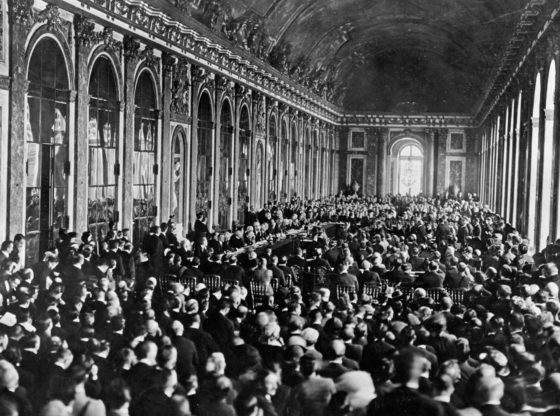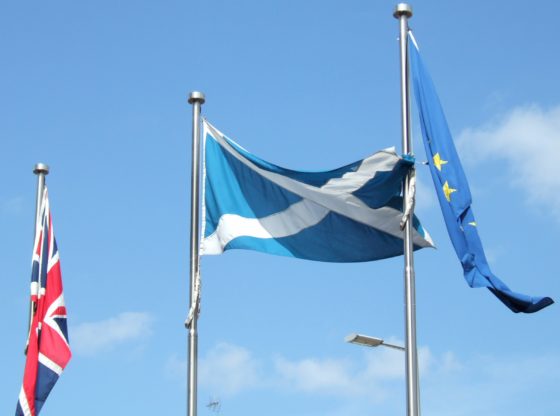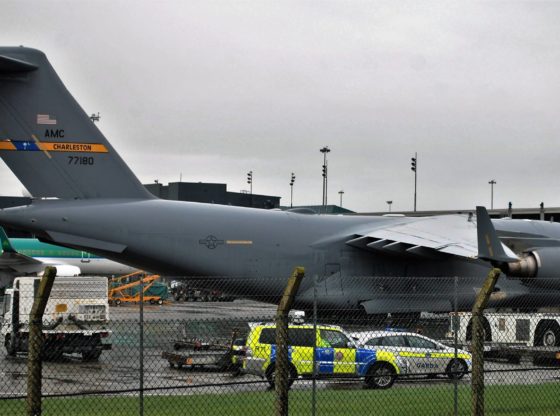In the first instalment of this exciting new feature, Alasdair Soussi profiles an individual making international news. This month, the spotlight is on New Zealand’s Prime Minister, Jacinda Ardern.
Just seven hours into her new job as New Zealand’s Labour leader, Jacinda Ardern was quizzed about her plans to have children.
“I’ve got a question and we’ve been discussing today whether or not I’m allowed to ask it,” said the male TV talk show host in August last year.
“A lot of women in New Zealand feel like they have to make a choice between having babies and having a career or continuing their career … so is that a decision you feel you have to make or that you feel you’ve already made?”
If Ardern was irritated by the question, she didn’t show it. She openly admitted that it was a “dilemma” — but she did not regard it as any different from other women in New Zealand trying to achieve a work-life balance and who may be “juggling lots of responsibilities”.
Today, Ardern, who at just 37, occupies the toughest gig in New Zealand as the country’s Prime Minister, is to be a mother after announcing last month that she was expecting her first child in June. She told reporters that she had already put plans in place for her new arrival. She would take six weeks maternity leave — and her partner would take on the responsibilities as a full-time dad thereafter. Simple.

Well-wishers came in thick and fast for the affable New Zealander, who announced her news via a Twitter photo of two fishing hooks, with a smaller hook, in reference to her partner, Clarke Gayford, who hosts a TV fishing show.
Canadian Prime Minister, Justin Trudeau, tweeted: ‘Congratulations Jacinda! All the best in this new adventure. Hope to meet the little angler one day.’
Scotland’s First Minister, Nicola Sturgeon, also dispatched a message on the social media platform: ‘Congrats to New Zealand’s PM Jacinda Ardern. This is first and foremost a personal moment for her — but it also helps demonstrate to young women that holding leadership positions needn’t be a barrier to having children (if you want to). An important first (as far as I know).’
In fact, Ardern - who will mark the end of her first 100 days in government on 3 February - is not the first world leader to become pregnant while in office: Benazir Bhutto became pregnant and gave birth while serving as Pakistan’s leader in 1990. Despite the warm wishes from around the world, Ardern has already had to deal with the odd grumble. These have come at home, from the likes of New Zealand columnist Mark Reason, who penned:
‘… if a baby can so challenge one of the world’s greatest athletes [in Serena Williams] then New Zealand is allowed to be concerned for our Prime Minister Jacinda Ardern.’
And also from abroad:
‘Oh please! Giving birth months after winning an election isn’t multi-tasking. It’s more a betrayal of voters’, wrote Britain’s Liz Jones of The Daily Mail.
A grinning Ardern shrugged off the Jones barb by stating: “I’d hope that maybe she’d asked a few New Zealand voters before she decided on their behalf.”
It was this candid and sharp public persona that provided the springboard for Ardern’s spectacular rise to the New Zealand premiership in October last year — becoming the youngest to secure the country’s top job since 1856.

For outsiders who simply know New Zealand as the filming location for The Lord of the Rings, Ardern’s success saw her take the helm of a small country with stunning fjords and breathtaking mountain peaks. Yet, the stateswoman has assumed the role of Prime Minister with her eyes firmly open.
“What is the point of economic growth when we have some of the worst homelessness in the developed world?” she pondered after becoming Prime Minister-elect.
The country’s third woman Prime Pinister was born Jacinda Kate Laurell Ardern in July 1980 in Hamilton, a city in New Zealand’s North Island. The daughter of a policeman and a school catering assistant, she was raised a Mormon — but left the church in her twenties due to its opposition to same-sex marriage.
After graduating from the University of Waikato in 2001, she began working as a researcher in the office of New Zealand’s second woman Prime Minister and fellow Labourite, Helen Clark. She was drawn to leftwing politics as a teenager — and has spoken of seeing “children without shoes on their feet or anything to eat for lunch” in her native Hamilton — and after her spell with Clark, she made her way to the UK to work for then-British Prime Minister Tony Blair.
A clear rising political star, Ardern soon got her first taste of domestic power when she became a list MP in 2008 at 28. Her steep upward trajectory continued when she fought and won convincingly a safe Labour seat in Auckland in February last year and when she was made deputy leader of the Labour Party in March. She took the reins of the party itself just months later - following the resignation of its then-leader, Andrew Little - and she led Labour into September’s general election.
The occasional DJ and lapsed Mormon wowed voters on the campaign trail - but she failed to win the election, coming second to the centre-right National Party. But the nationalist and populist New Zealand First party emerged as kingmakers and its 72-year-old leader, Winston Peters, threw his support behind Ardern. She gave Peters the dual portfolios of Deputy Prime Minister and Foreign Minister.
Jacinda Ardern biography:
26 July 1980: born in Hamilton - 2001: graduates from the University of Waikato with a Bachelor of Communication Studies degree - 2008: elected as the President of the International Union of Socialist Youth and becomes a list MP - February 2017: wins Mount Albert by-election - March 2017: becomes deputy leader of the Labour Party - August 2017: secures the leadership of the party and becomes Leader of the Opposition - September 2017: fights general election and comes in second - October 2017: after cross party support becomes Prime Minister - 19 January 2018: announces that she is expecting her first child.
The unexpected rise of this social democrat and open republican — she advocated losing the Queen as head of state before her rise to Prime Minister — has put the Kiwi front and centre when it comes to tackling New Zealand’s stern challenges.
With just 4.7 million inhabitants, the rugby-mad nation has one of the worst records of child abuse in the developed world. According to UNICEF New Zealand: ‘On average, a New Zealand child dies every 5 weeks as a result of violence. Children under twelve months old make up the majority of this statistic, and 90 per cent of the time they have been killed by a parent or family member’. A 2017 UNICEF report also found that New Zealand had the highest youth suicide rate in the developed world with 15.6 suicides per 100,000 people.
With a bleak nationwide homelessness rate and a methamphetamine crisis to boot, Ardern’s domestic in-tray is sky-high and not a little testing.
With a bleak nationwide homelessness rate and a methamphetamine crisis to boot, Ardern’s domestic in-tray is sky-high and not a little testing. She also told TIME magazine of her desire to cut immigration - which will not please everyone on her side of the political fence - stating that New Zealand cannot “offer a false dream to those who make an extraordinary effort to come here.”
On the campaign stump, Ardern came across as arguably the most inexperienced candidate - especially in matters foreign, due to her lack of experience at the very top echelons of power - and only time will tell whether she has the political skills to deliver what she promised, and keep her coalition government together. That said, she rode the wave of so-called “Jacindamania” with aplomb and has taken to high office with a swagger.
Indeed, for a woman who joked to US President Donald Trump that “no one marched when I was elected”, impending motherhood as a national leader is simply a natural state of affairs for this very natural politician.
Alasdair Soussi is an internationally published freelance journalist, currently based in Glasgow, who has worked across Africa, Europe, and the Middle East. He is on Twitter at: @AlasdairSoussi To read more about Alasdair’s work, go to: alasdairsoussi.com
Feature image: Jacinda Ardern before her swearing-in as Prime Minister, 26 October 2017. Image: Governor-General of New Zealand [CC BY 4.0]











